Driver’s view: Steven Forbes’ Sands Horizon 6000
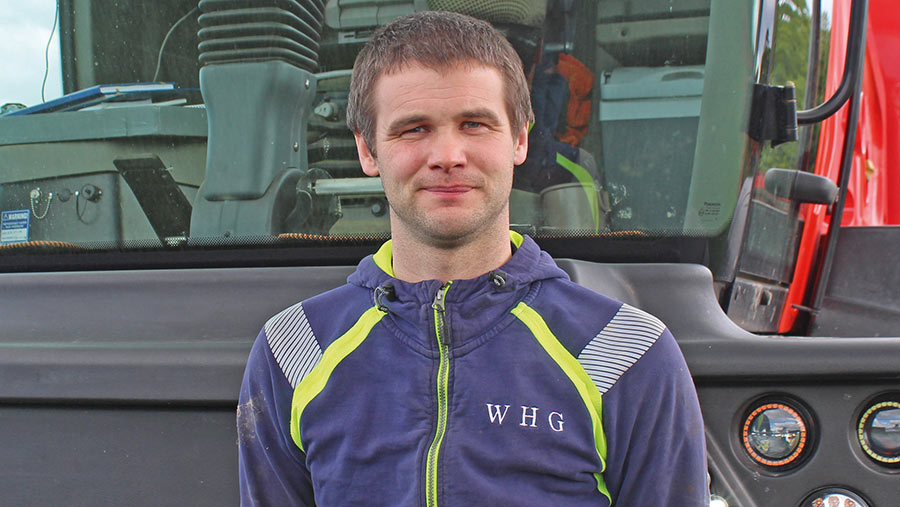
Steven Forbes © James Andrews
Steven Forbes talks us through his 2019 Sands Horizon fitted with 36m variable-geometry booms and a 6,000-litre tank.
He works for a 1,200ha arable, anaerobic digestion and contacting business run by Simon Gittins at Ruyton XI Towns, Shropshire, and he’s currently in the middle of taking his Basis qualification.
Farm facts
- Operator Steven Forbes
- Company Wykey Farm, Ruyton XI Towns, Shropshire
- Farm size: 1,200ha plus contracting
- Crops grown Wheat, oilseed rape, maize, beet, forage and hybrid rye, lucerne, grass
- Sprayer used Sands Horizon 6000
See also: Bespoke liquid fert kits improve no-till drilled crop performance
What sprayer are you using?
I’ve got a 2019 Sands Horizon 6000 with a 36m variable-geometry boom, Hypro Duo React nozzle bodies and Ag Leader spray controller with RTK guidance.
It’s my first self-propelled machine, having moved from a 6,000-litre John Deere trailed, which wasn’t ideal for backing into corners and lacked ground clearance.
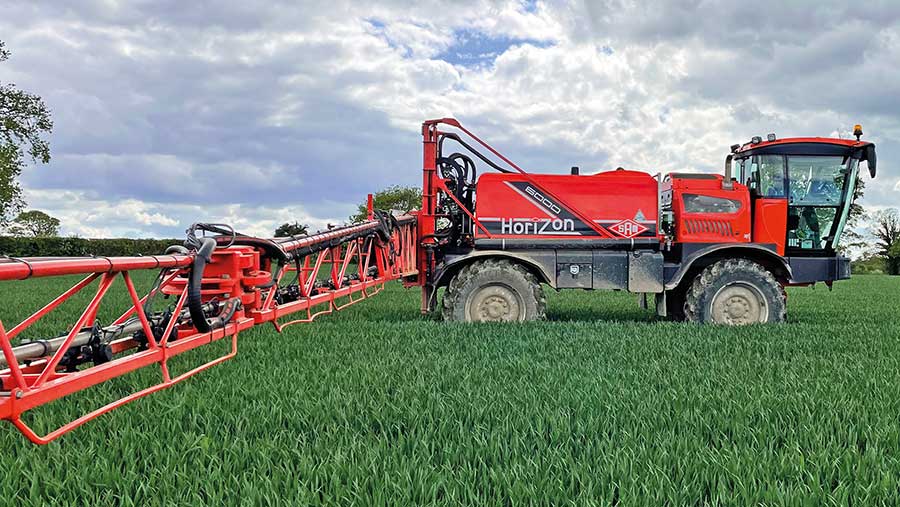
Hydraulic track width adjustment eases the transition from cereals to maize and beet © James Andrews
Before settling on the Sands, I went to the National Sprayer Demo Day and had a go in most of the machines on offer.
There were several things that made the Horizon stand out, but the main one was the level of technology in the cab. Most functions are grouped neatly in a single screen, so there’s no need to have additional monitors cluttering up the space.
It was also one of the best for visibility, and I liked the fact that it’s possible to look over the top of the spray pack. Customer service and backup is excellent, too.
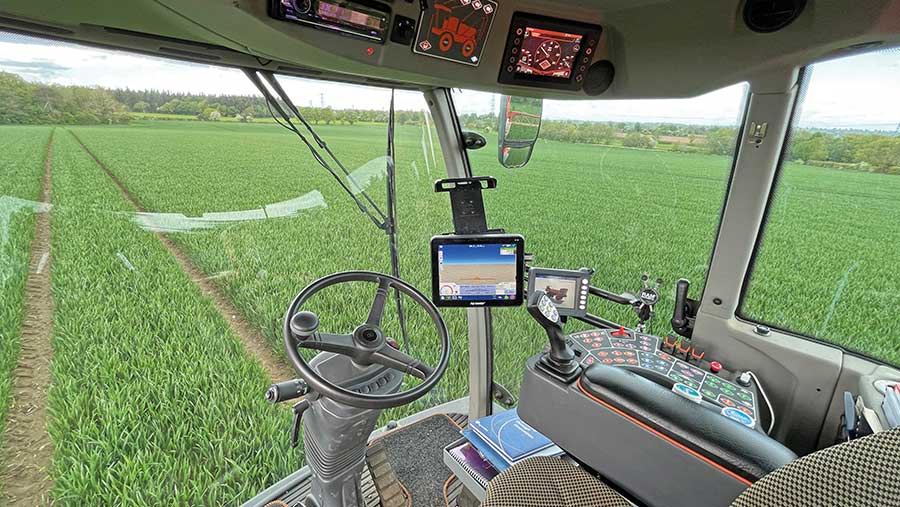
The cab is spacious and offers good views, but Mr Forbes has made a few tweaks – including adding a paperwork tray on top of the fuse box © James Andrews
What extras did you get?
I spent quite a lot of time weighing up different options to make sure I got the best machine I could for the money.
This meant forgoing a few nice-to-have features such as pulse-width modulation and individual nozzle control. In the end, I opted to have the Duo React nozzle bodies with one fixed outlet and one rotating triple, set at 1.5m sections.
Although I would have liked more sections, this is double what I used to have and I haven’t noticed any problems with the auto-section control over-spraying or missing any areas.
Sands Horizon 6000
- Price paid £230,000
- Year 2019
- Hours 1,200
- Engine Deutz-Fahr six-cylinder
- Power 242hp
- Transmission Four-speed hydrostatic
- Road speed 40kph
- Tank size 6,000 litres
- Rinse tank 300 litres
- Nozzles Twin line – Hypro Duo React single and triplet
- Auto shut-off 1.5m sections
- Boom levelling Norac UC5
- Guidance Ag Leader RTK
- Boom width 36m variable geometry
- Wheel sizes 420/85 R34 and 710/55 R30
With the old sprayer, I had to fiddle with the timings to avoid unsprayed triangles in the short ground, but this was perfect when it was delivered.
Other upgrades on the spray pack include e-taps, Norac UC5 boom levelling, air rinsing and a fast-fill port. We haven’t yet moved to liquid fertiliser, but we added the port so that we had that option when we were ready.
As I’ve got on well with the machine and I have some additional capacity, we might make the switch soon.
The beauty of the Duo React bodies is that I can leave the liquid fert dribble bars in place, and switch between them and the trio of conventional nozzles from the cab.
On the tractor unit, I opted for autosteer and an auto-lube system, which makes a huge difference to daily maintenance.
The only manual grease nipples I have to bother with now are the ones on the second boom pivot.
I don’t actually use the autosteer that much when I’m spraying on tramlines, but we might move to putting them in with the sprayer, which is when it will come into its own.
It’s also got hydraulic track width adjustment as I need to push the wheels out for spraying maize and beet, and blue LED boom lights, which make it much easier to spot blocked nozzles at night.
Another feature that didn’t come in on budget was traction control, and that’s something I’d like to consider next time.
I’ve only been stuck once, and I don’t think it could have helped me there, but I reckon it would make a difference to grip when it’s a bit greasy on top.
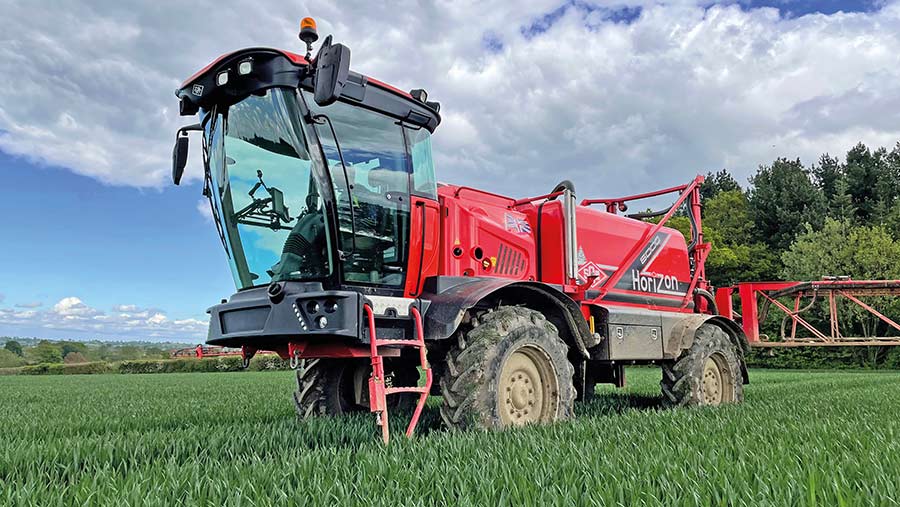
© James Andrews
How has it performed?
I’m really pleased with its performance and it’s so much nicer to use than the trailed I had before.
For a 6,000-litre machine, manoeuvrability is excellent and I can easily back it into corners without rolling extra crop down. The added ground clearance has also put an end to crop damage between the tramlines.
I used to spray off rape with the trailed and you would always see the combine yield meter drop in those areas.
It’s comfortable to drive, has a spacious cab and the controls are all logically arranged and easy to use.
The only slightly negative comments I’ve got about the cab are the fact that the switch panel on the console can get a little hot and there was an annoying rattle in the door that I’ve silenced with some foam.
I was also short on space for storing my paperwork, so I made a tray in the workshop that I’ve bolted on top of the fuse box.
Most of my records are submitted directly onto Gatekeeper, so there’s an iPad mounted above the main screen.
On the whole, the Norac boom levelling works well, but there are occasions where the 12m pivot point gets too close the ground.
I think this is something Sands is working to improve, possibly by adding additional sensors.
Also, because I’ve only got 2m break-backs, I have to pay close attention to obstacles – it’s not much to play with when the end of the boom is the best part of 18m away.
To make my first run round the headland a little easier, we might look to drill the headlands with GPS and add a tramline.
At the moment, I follow the roller marks, but it’s not always ideal.
I’m pleased with the performance of the spray pack, but it can take a while for the chemical to get the ends of the boom when the six-cylinder pump is in the first of its two speed settings.
I always run it in high, which makes it considerably faster, but I find that it’s a bit noisy whirring away behind me.
Reliability has been good and I’ve only had the odd teething problem that Sands has sorted quickly – none of them have stopped me working.
Backup is brilliant and Craig at Sands is at the end of the phone day or night.
What are your go-to nozzles?
I tend to spray at 100-150 litres/ha, so I usually have 025 and 035 Guardian Airs and a set of Defy nozzles fitted. Those cover most eventualities.
What’s your spray store and fill-up area like?
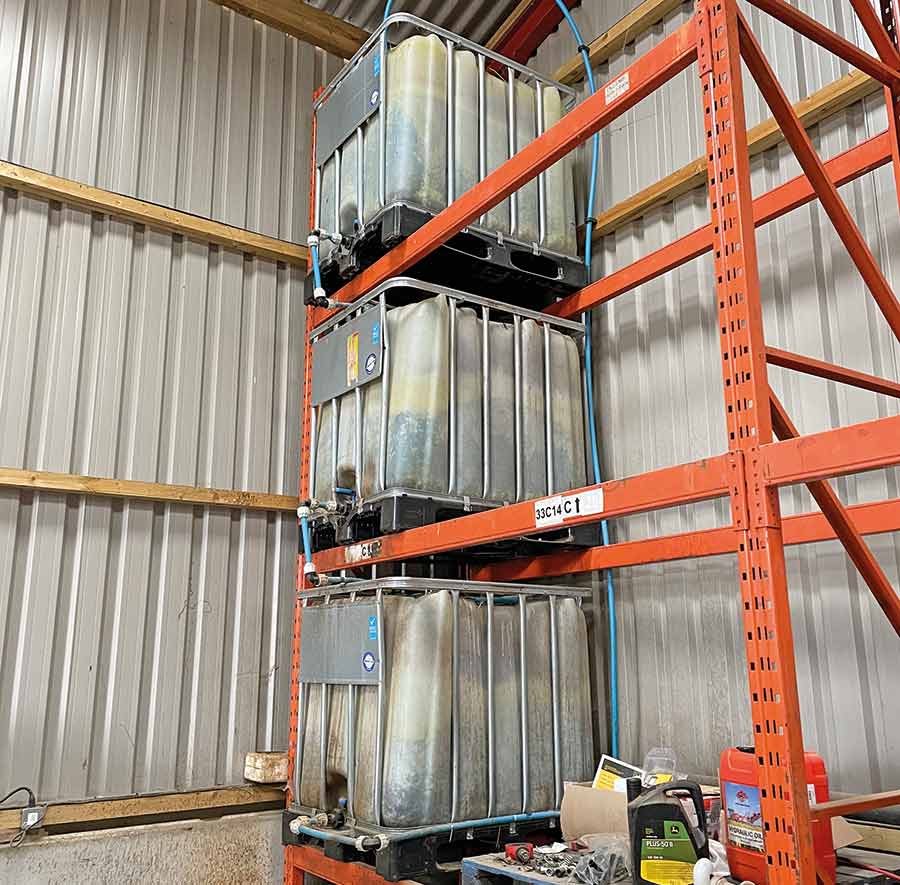
A three-tiered IBC bio bed was installed with funding from Severn Trent © James Andrews
I’ve got a purpose-built chemical store and filling area with a sump that pumps into a three-tiered IBC bio bed in the corner.
It was put up with the help of some funding from Severn Trent and gives me plenty of space to work.
Next on my list is buying or making a filling station, a bit like the Pro Fill from Vegecraft.
This will speed up the job and give me a good area for washing cans and letting them drain safely.
Likes and gripes
Likes
✅ Slick controls
✅ Good visibility
✅ Tough and reliable
Gripes
❌ Loud pump
❌ Low boom pivot
❌ Control panel gets hot

